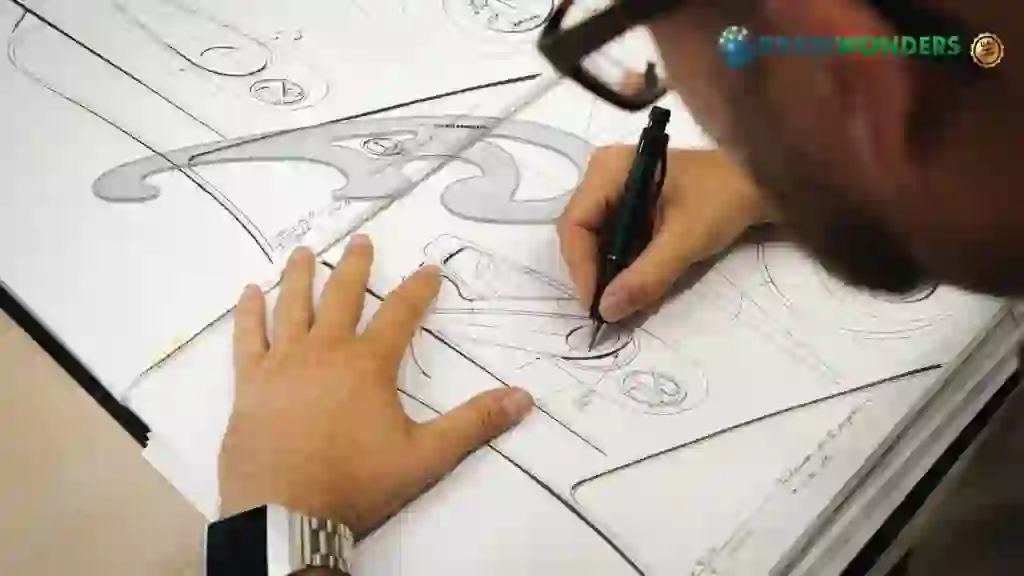How to become a Patternmaker, Metal and Plastic
Overview, Courses, Exam, Colleges, Pathways, Salary

Overview
Who is Patternmaker, Metal and Plastic ?
Patternmakers in metal and plastic are skilled professionals who play a crucial role in the manufacturing industry. They specialize in creating precise patterns, templates, and moulds for producing metal or plastic components. Here is an overview of the roles and responsibilities of patternmakers in both metal and plastic industries:
Patternmaker, Metal: Metal patternmakers work primarily in foundries or manufacturing facilities that produce metal components. Their key responsibilities include:
- Pattern Design and Development: Metal patternmakers interpret engineering drawings or models to design and develop patterns used in casting processes. They consider material shrinkage, dimensional accuracy, and mould requirements.
- Pattern Construction: Using hand tools and machinery, metal patternmakers construct patterns from wood, metal, or plastic. They shape and assemble the components to create the desired pattern.
- Pattern Maintenance and Repair: Metal patternmakers ensure the proper maintenance and repair of patterns to ensure their longevity and quality. They may make adjustments or modifications as needed.
Patternmaker, Plastic: Plastic patternmakers work in industries where plastic components or products are manufactured. Their responsibilities include:
- Mould Design and Development: Plastic patternmakers create patterns or moulds for plastic injection moulding processes. They translate design specifications into patterns that will produce the desired plastic components.
- Mould Construction: Plastic patternmakers use various techniques and materials, such as aluminium, steel, or epoxy, to construct the moulds. They ensure precise dimensions and smooth surfaces to achieve high-quality plastic parts.
- Mould Maintenance and Repair: Plastic patternmakers maintain and repair moulds to ensure proper functioning and longevity. They troubleshoot issues, make necessary adjustments, and repair them to prevent production delays.
Typical day at work
What does Patternmaker, Metal and Plastic do?
- Pattern Design: Patternmakers interpret engineering drawings, blueprints, or specifications to create patterns that will be used in the production process. They analyze the design requirements, dimensions, and tolerances to develop precise patterns that match the desired final product.
- Pattern Construction: Patternmakers use a variety of materials, such as wood, metal, or plastic, to construct the patterns. They employ specialized tools, machinery, and techniques to shape and assemble the components into the required pattern form.
- Pattern Testing and Refinement: Patternmakers may conduct tests or simulations to ensure the accuracy and functionality of the patterns. They assess factors like fit, alignment, and proper functioning of the patterns, making necessary adjustments or refinements as needed.
- Pattern Maintenance and Repair: Patternmakers are responsible for the maintenance and repair of patterns to ensure their longevity and optimal performance. They may inspect patterns, make repairs, replace worn components, or modify patterns based on feedback or changes in production requirements.
- Collaboration and Communication: Patternmakers work closely with engineers, designers, and production teams to understand project requirements, address technical issues, and ensure the seamless integration of patterns into the manufacturing process. Effective communication and collaboration are essential for successful pattern development and production.
Abilities and Aptitude needed
What are the skills, abilities & aptitude needed to become Patternmaker, Metal and Plastic?
- Technical Skills: Patternmakers must possess strong technical skills specific to metal or plastic patternmaking. They should be proficient in using tools, machinery, and equipment relevant to pattern construction, such as woodworking tools, CNC machines, or metalworking techniques.
- Reading and Interpretation Skills: Patternmakers need excellent reading and interpretation skills to understand engineering drawings, blueprints, or specifications. They must accurately interpret design requirements, dimensions, tolerances, and other technical details.
- Attention to Detail: Patternmakers must have a keen eye for detail to ensure precision and accuracy in pattern construction. They must closely examine measurements, alignment, and other specifications to create patterns that meet the desired standards.
- Problem-Solving Abilities: Patternmakers encounter challenges, such as complex designs or material limitations, when developing patterns. They should possess problem-solving abilities to analyze problems, find practical solutions, and adjust or modify as needed.
- Manual Dexterity: Patternmaking involves working with various materials and using tools and machinery to shape, assemble, and refine patterns. Manual dexterity is crucial for handling materials, accurate measurements, and intricate construction.
- Spatial Awareness: Patternmakers need a strong sense of spatial awareness to visualize the three-dimensional form of patterns based on two-dimensional drawings or designs. They must understand how different components fit together and how patterns translate into the final product.
- Adaptability and Learning: The field of patternmaking is constantly evolving, with new techniques, materials, and technologies emerging. Patternmakers should be adaptable and open to learning new skills and keeping up with advancements in patternmaking processes and equipment.
- Communication and Collaboration: Patternmakers often collaborate with engineers, designers, and production teams. Practical communication skills are essential to understand project requirements, provide input, and collaborate on design modifications or improvements.
Salary
Salary for Patternmaker, Metal and Plastic?
Salary of Metal and Plastic Patternmakers is as follows :
- Minimum Monthly Salary: Entry-level Metal and Plastic Patternmakers can expect a minimum monthly salary ranging from INR 20,000 to INR 30,000. These initial earnings are typical for individuals who have recently started their careers in patternmaking for metal and plastic fabrication.
- Maximum Monthly Salary: Highly experienced and specialized Metal and Plastic Patternmakers with advanced skills in working with metals, plastics, and precision tooling may earn anywhere from INR 60,000 to INR 1,20,000 or more per month. Patternmakers working on complex industrial projects, custom metal fabrication, or precision moulding may command higher salaries.
- Annual Salary: The annual salary for entry-level or junior Metal and Plastic Patternmakers could range from INR 2,40,000 to INR 3,60,000. As Patternmakers gain more experience, master advanced metalworking and plastic moulding techniques, and contribute to specialized manufacturing processes. Their annual income can increase from approximately INR 4,80,000 to INR 9,60,000 or higher.
- Highest Paying Jobs and Scope: Metal and Plastic Patternmakers specializing in industrial mould making, precision machining, custom metal or plastic parts fabrication, or additive manufacturing often enjoy better salary prospects. Those collaborating with aerospace, automotive, or electronics industries, where precision and quality are paramount, may have enhanced earnings. The role of Metal and Plastic Patternmakers is pivotal in creating accurate and detailed moulds, patterns, and templates that serve as blueprints for manufacturing components. With the expansion of advanced manufacturing technologies and the demand for specialized components, skilled Metal and Plastic Patternmakers are expected to have a steady demand. Patternmakers who continuously refine their skills, stay updated with technological advancements, and excel in translating design specifications into high-quality metal and plastic products are likely to have promising career growth in the manufacturing and engineering sectors.
Ready to become a Patternmaker, Metal and Plastic ?
Take the world’s best assessment test !
Take a TestPathways
How to become an Patternmaker, Metal and Plastic?
Entrance Exam
Entrance Exam for Patternmaker, Metal and Plastic ?
Courses
Which course I can pursue?
Best Colleges
Which are the best colleges to attend to become an Patternmaker, Metal and Plastic?
Industries
Which Industries are open for Patternmaker, Metal and Plastic?
- Foundries: Metal patternmakers are commonly employed in foundries where metal components are produced through casting processes. They create patterns used to make moulds for casting metal parts.
- Manufacturing and Machining: Patternmakers can work in manufacturing facilities that produce a wide range of metal or plastic components. These industries utilize patterns in processes such as metal fabrication, machining, or plastic injection moulding.
- Aerospace and Defense: The aerospace and defence industries often require patternmakers to develop patterns for producing precision components, such as aircraft parts or defence equipment.
- Automotive: Patternmakers may find opportunities in the automotive industry, contributing to the manufacturing of metal or plastic parts used in vehicles, including engine components, body panels, or interior parts.
- Construction and Architecture: Patternmakers can be involved in the construction and architecture sectors, where they create patterns for casting or fabricating decorative metal or plastic elements, such as ornamental fixtures or customized architectural components.
- Marine and Shipbuilding: The marine and shipbuilding industries employ patternmakers to create patterns for manufacturing various metal components used in shipbuilding, including propellers, hull parts, or engine components.
- Plastics and Composites: Patternmakers specializing in plastic work in industries that involve plastic injection moulding or composite material manufacturing. They develop patterns or moulds used in producing plastic components or composite structures.
- Custom Fabrication: Some patternmakers work in custom fabrication shops or small-scale manufacturing businesses. They create patterns for specialized or unique metal or plastic components based on specific customer requirements.
internship
Are there internships available for Patternmaker, Metal and Plastic?
- Industry Internships: Metal and plastic manufacturing companies or foundries may offer internships for individuals interested in patternmaking. These internships provide practical experience in pattern design, construction, and maintenance within a professional manufacturing environment.
- Apprenticeship Programs: Some apprenticeship programs exist specifically for patternmaking in metal or plastic industries. These programs combine on-the-job training with classroom instruction, allowing individuals to learn the skills and techniques required for patternmaking under the guidance of experienced professionals.
- Vocational Training Institutions: Technical schools or vocational training institutions may offer patternmaking programs that include internships or work placements. These programs provide a structured curriculum and practical training opportunities to develop patternmaking skills.
- Industry Collaborations: Patternmaking associations or industry organizations may collaborate with educational institutions to offer internships or training programs. These collaborations provide students or recent graduates with the opportunity to work with professionals in the field, gain hands-on experience, and expand their knowledge and skills.
- Research and Development: Some research and development departments within metal and plastic industries offer internships for patternmakers. These internships involve working on projects related to pattern design, material testing, or process improvement, allowing individuals to gain experience in innovative patternmaking techniques and technologies.
Career outlook
What does the future look like for Patternmaker, Metal and Plastic?
The future for patternmakers in the metal and plastic industries looks promising as technological advancements and manufacturing processes continue to evolve. Integrating automation, computer-aided design (CAD), and additive manufacturing technologies will streamline patternmaking processes, enhance precision, and improve overall efficiency. Additionally, the growing demand for customized and complex components in various industries will create opportunities for patternmakers. Adapting to new materials and techniques, staying updated with industry trends, and continuously honing skills will be essential for patternmakers to thrive in the evolving landscape of metal and plastic manufacturing.







